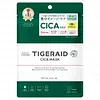What's inside
What's inside
 Key Ingredients
Key Ingredients

 Benefits
Benefits

 Concerns
Concerns

 Ingredients Side-by-side
Ingredients Side-by-side

Salicylic Acid
MaskingDipotassium Glycyrrhizate
HumectantWater
Skin ConditioningButylene Glycol
HumectantDipropylene Glycol
HumectantSerine
MaskingLactobacillus/Pear Juice Ferment Filtrate
Skin ConditioningCalendula Officinalis Extract
Skin ConditioningNiacin
SmoothingCoix Lacryma-Jobi Ma-Yuen Seed Extract
Skin ConditioningMagnesium Ascorbyl Phosphate
AntioxidantTocopherol
AntioxidantAcrylates/C12-22 Alkyl Methacrylate Copolymer
Disodium EDTA
Xanthan Gum
EmulsifyingDiglycerin
HumectantPolyglyceryl-3 Decyltetradecyl Ether
EmulsifyingDisodium Phosphate
BufferingSodium Hydroxide
BufferingSalicylic Acid, Dipotassium Glycyrrhizate, Water, Butylene Glycol, Dipropylene Glycol, Serine, Lactobacillus/Pear Juice Ferment Filtrate, Calendula Officinalis Extract, Niacin, Coix Lacryma-Jobi Ma-Yuen Seed Extract, Magnesium Ascorbyl Phosphate, Tocopherol, Acrylates/C12-22 Alkyl Methacrylate Copolymer, Disodium EDTA, Xanthan Gum, Diglycerin, Polyglyceryl-3 Decyltetradecyl Ether, Disodium Phosphate, Sodium Hydroxide
Water
Skin ConditioningPropanediol
SolventGlycerin
HumectantPentylene Glycol
Skin ConditioningSodium Ascorbyl Phosphate
AntioxidantInositol
HumectantDipotassium Glycyrrhizate
HumectantSerine
MaskingCentella Asiatica Extract
CleansingCentella Asiatica Leaf Extract
Skin ConditioningTocopherol
AntioxidantHouttuynia Cordata Extract
Skin ConditioningNiacinamide
SmoothingHamamelis Virginiana Leaf Extract
Skin ConditioningPanthenol
Skin ConditioningPyridoxine Hcl
Skin ConditioningArtemisia Argyi Leaf Extract
Skin ConditioningLavandula Angustifolia Oil
MaskingHydrolyzed Hyaluronic Acid
HumectantButylene Glycol
HumectantPPG-6-Decyltetradeceth-30
EmulsifyingBenzophenone-3
UV AbsorberCarbomer
Emulsion StabilisingBifida Polysaccharide
HumectantSodium Metaphosphate
BufferingPotassium Hydroxide
BufferingPhenoxyethanol
PreservativeWater, Propanediol, Glycerin, Pentylene Glycol, Sodium Ascorbyl Phosphate, Inositol, Dipotassium Glycyrrhizate, Serine, Centella Asiatica Extract, Centella Asiatica Leaf Extract, Tocopherol, Houttuynia Cordata Extract, Niacinamide, Hamamelis Virginiana Leaf Extract, Panthenol, Pyridoxine Hcl, Artemisia Argyi Leaf Extract, Lavandula Angustifolia Oil, Hydrolyzed Hyaluronic Acid, Butylene Glycol, PPG-6-Decyltetradeceth-30, Benzophenone-3, Carbomer, Bifida Polysaccharide, Sodium Metaphosphate, Potassium Hydroxide, Phenoxyethanol
 Reviews
Reviews

Ingredients Explained
These ingredients are found in both products.
Ingredients higher up in an ingredient list are typically present in a larger amount.
Butylene Glycol (or BG) is used within cosmetic products for a few different reasons:
Overall, Butylene Glycol is a safe and well-rounded ingredient that works well with other ingredients.
Though this ingredient works well with most skin types, some people with sensitive skin may experience a reaction such as allergic rashes, closed comedones, or itchiness.
Learn more about Butylene GlycolDipotassium Glycyrrhizate comes from licorice root.
Extracts of licorice have demonstrated to have antibacterial, anti‐inflammatory, antiviral, antioxidant properties.
One component, glabridin, has extra potent antioxidant and soothing properties. It has also been found to block pigmentation from UVB rays in guinea pigs.
Licorice Root also contains a flavonoid. Flavonoids are a natural substance from in plants. Flavonoids also have antioxidant properties.
Another component, glycyrrhizin, has been found to have anti-inflammatory and antimicrobial benefits. This may make licorice root extract effective at treating acne. However, more research is needed to support this.
Liquiritin is one of the flavone compounds found in licorice. It has been found to help lighten skin by preventing tyrosinase from reacting with tyrosine. When the two react, protein is converted to melanin. Melanin is the substance in your body that gives your features pigmentation.
Licorice root is native to Southern Europe and Asia. It has been used in traditional Chinese medicine to help with respiratory issues.
Learn more about Dipotassium GlycyrrhizateSerine is an amino acid naturally found in our body. Our bodies use amino acids to create protein.
Amino-acids help give keep our skin hydrated. They play an important role in the skin barrier, which keeps the skin plump and firm.
Serine is a non-essential amino acid, meaning we don't need to obtain it from eating foods.
Learn more about SerineTocopherol (also known as Vitamin E) is a common antioxidant used to help protect the skin from free-radicals and strengthen the skin barrier. It's also fat soluble - this means our skin is great at absorbing it.
Vitamin E also helps keep your natural skin lipids healthy. Your lipid skin barrier naturally consists of lipids, ceramides, and fatty acids. Vitamin E offers extra protection for your skin’s lipid barrier, keeping your skin healthy and nourished.
Another benefit is a bit of UV protection. Vitamin E helps reduce the damage caused by UVB rays. (It should not replace your sunscreen). Combining it with Vitamin C can decrease sunburned cells and hyperpigmentation after UV exposure.
You might have noticed Vitamin E + C often paired together. This is because it is great at stabilizing Vitamin C. Using the two together helps increase the effectiveness of both ingredients.
There are often claims that Vitamin E can reduce/prevent scarring, but these claims haven't been confirmed by scientific research.
Learn more about TocopherolWater. It's the most common cosmetic ingredient of all. You'll usually see it at the top of ingredient lists, meaning that it makes up the largest part of the product.
So why is it so popular? Water most often acts as a solvent - this means that it helps dissolve other ingredients into the formulation.
You'll also recognize water as that liquid we all need to stay alive. If you see this, drink a glass of water. Stay hydrated!
Learn more about Water